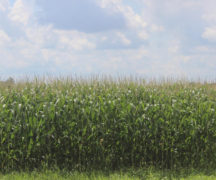The western basin of Lake Erie had a “relatively mild” Microcystis cyanobacteria bloom in 2020, according to the National Oceanic and Atmospheric Administration.
The bloom had a severity index of 3. The bloom was much less severe than in 2019, which had a severity of 7.3. The forecasted bloom severity was between 4-5, a small overestimate.
This forecast uses an ensemble of different models, which consider phosphorus loading into the lake during the spring and early summer. One of the models correctly forecast the severity, other models over-estimated the severity by different amounts.
NOAA scientists will be examining these differences in comparison with forecasts for previous years to evaluate the models.
The bloom developed starting in late July, and reached a peak during the last week of August. It weakened rapidly in the first week of September, following several days of strong wind events, including 40 mph winds on Sept. 7. The blooms in 2018 and 2019 also declined during a windy September, whereas several previous years saw blooms persisting through September.
The severity index captures the amount of bloom biomass over the peak 30 days of the bloom. The winds may have shorted the duration of the bloom. If the peak of the end of August had lasted into mid-September, the severity could have been as high as 3.4, as observed in 2018.





